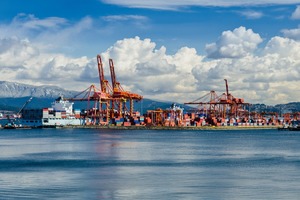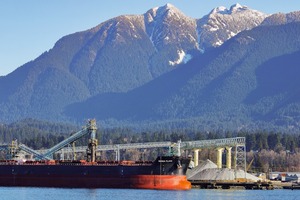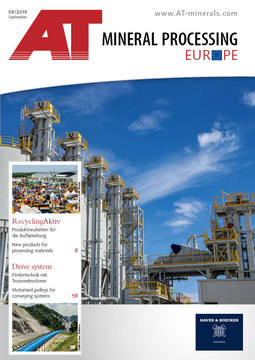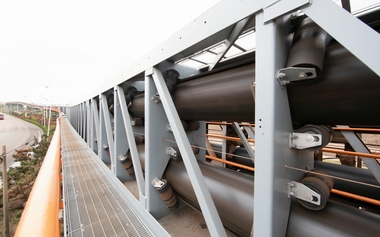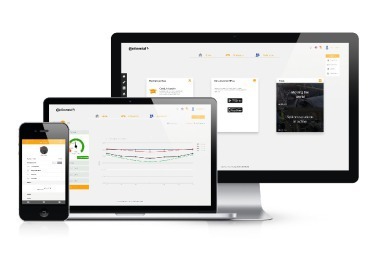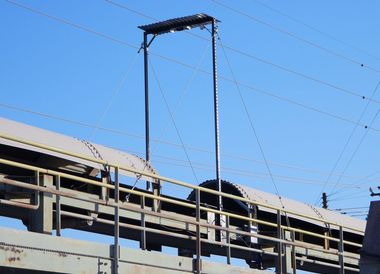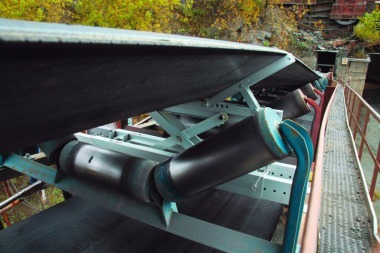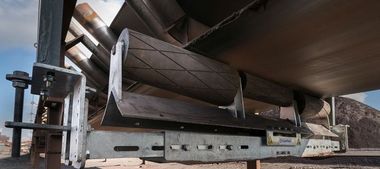Condition monitoring tool drives Continental conveyor belts to peak performance
The city of Vancouver in the province of British Columbia on Canada‘s west coast is not just important for the export of bulk materials, it is also the country‘s largest port. In terms of export volume, it is even the largest in the whole of North America. One of the most important commodities for the food economy is shipped across the world from these docks: potash. This water-soluble crop nutrient is an indispensable ingredient in fertilizers and therefore of great importance for global agriculture, because fertilizers that promote healthy crop growth are becoming increasingly important in ensuring that the constantly expanding global population can also be fed in the future. Particularly since the area of land available for agricultural use is constantly shrinking, in part as a result of the growth of towns and cities, the suitable areas have to be fertilized even more efficiently and precisely.
Canada is the leading global exporter of potash
Canada is the world‘s largest producer and exporter of potash. According to Natural Resources Canada, the country exported around 19 million tonnes of potash in 2017 and is the leading player in the global export market, with a market share of almost 40 %. Furthermore, Canada, together with Russia, is by far the most important region in terms of potash reserves. Natural Resources Canada‘s calculations show that the country of lakes and forests contains around a billion tonnes of potash – meaning it holds approximately one-quarter of global reserves.
The smooth, efficient transport, loading and global shipping of these huge quantities of material is where conveyor belts from Continental come in. In the port of Vancouver, they deliver potash to further storage or directly to the vessels for shipping. The volumes – and therefore the load on the conveyor belts – are enormous. The responsible terminals have two berths for potash operations. One has two quadrant shiploaders that can operate simultaneously, each with a rated capacity of 2500 t/h. The second has a single linear shiploader also capable of loading 2500 t/h.
Precise predictions and information on the condition of the conveyor belt system
The operators of the terminals use the ContiPlus software and the associated app to ensure its conveyor belts withstand this volume of material for as long as possible and can be maintained predictively. The conveyor belt systems and their processes can be continually optimized thanks to the precise condition monitoring allowed by the program. In this, the thickness of the conveyor belt top cover is measured at each service using a mobile ultrasound scanner and stored in a database. This provides a continuous record of the belt‘s condition.
Based on the data, the program can predict when a belt should be changed because of wear. That means the conveyor belt‘s lifetime can be fully exploited while avoiding costly downtime at the same time. “An important economic benefit,” says Lyall Sharman, area sales manager for industrial products at Continental. “Once the belt has almost reached the end of its lifetime, the customer, distributor or sales employee receives a notification on their mobile device to coordinate the belt change.“
The major benefit of ContiPlus is that the system can capture, evaluate and document all the data relevant to a conveyor belt system. “The software records every detail and brings structure to all the system-related information,” emphasizes Sharman. In addition, information dating back a long time is also easily traced. “Transparency is significantly increased. Every new employee immediately has access to all the information on the belt system, i.e. including its history. That saves a great deal of time and money.” Continental is continuing to further develop the ContiPlus system based on individual customer and market circumstances. For instance, a more straightforward overview is provided by a new interface with a folder structure. Further additions are being planned.
In cooperation with its respective British Columbia-based distribution partner, Continental‘s experts have so far been able to capture and load more than 1600 data points from more than 150 systems at the customers. Continental is therefore making a significant contribution to ensuring that the global demand for potash is met – safeguarding the agriculture sector and the production of sufficient food.

